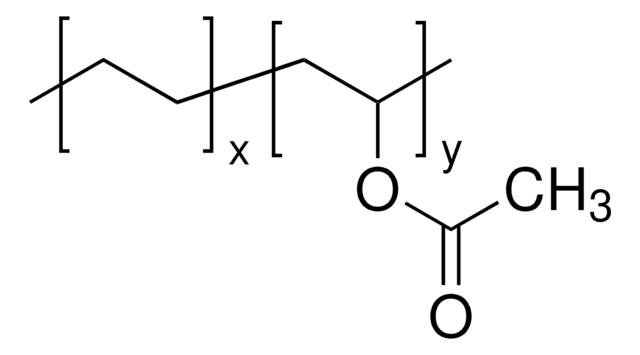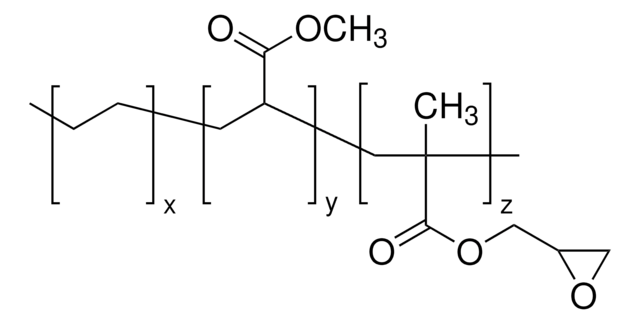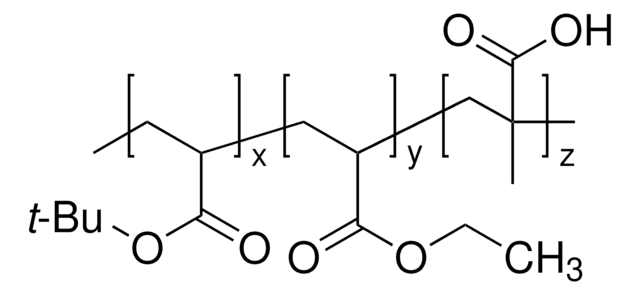426717
Poly(ethylene-co-acrylic acid)
acrylic acid 5 wt. %, beads
About This Item
Produits recommandés
Description
drop point 105 °C Mettler
Niveau de qualité
Forme
beads
Composition
acrylic acid, 5 wt. %
Dureté
≤2.5 dmm (ASTM D 5, 25 °C)
Viscosité
575 cP(145 °C, Brookfield)(lit.)
Indice d'acide
37‑44 mg KOH/g
Température de transition
Tm 99-101 °C
Densité
0.93 g/mL at 25 °C
Chaîne SMILES
C=C.OC(=O)C=C
InChI
1S/C3H4O2.C2H4/c1-2-3(4)5;1-2/h2H,1H2,(H,4,5);1-2H2
Clé InChI
QHZOMAXECYYXGP-UHFFFAOYSA-N
Vous recherchez des produits similaires ? Visite Guide de comparaison des produits
Catégories apparentées
Application
Caractéristiques et avantages
Mention d'avertissement
Danger
Mentions de danger
Conseils de prudence
Classification des risques
Aquatic Chronic 3 - Eye Dam. 1 - Skin Corr. 1A - STOT SE 3
Organes cibles
Respiratory system
Code de la classe de stockage
8A - Combustible corrosive hazardous materials
Classe de danger pour l'eau (WGK)
WGK 3
Point d'éclair (°F)
Not applicable
Point d'éclair (°C)
Not applicable
Faites votre choix parmi les versions les plus récentes :
Déjà en possession de ce produit ?
Retrouvez la documentation relative aux produits que vous avez récemment achetés dans la Bibliothèque de documents.
Notre équipe de scientifiques dispose d'une expérience dans tous les secteurs de la recherche, notamment en sciences de la vie, science des matériaux, synthèse chimique, chromatographie, analyse et dans de nombreux autres domaines..
Contacter notre Service technique








